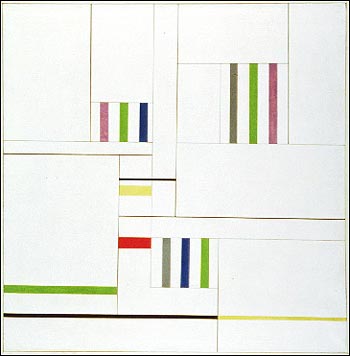Fogg Art Museum,
Mar 03, 2001 - Nov 04, 2001
Cambridge, MA, USA
Exhibition Press Release
by LatinArt.com
The rich figurative tradition of Latin American art is well known. Yet, beginning in the 1940s and 1950s, many artists from Brazil, Argentina, Uruguay, and Venezuela, along with their European counterparts, responded enthusiastically to earlier developments in abstract art, especially the paintings of Piet Mondrian and the De Stijl movement in the Netherlands and the sculptures of the Swiss artist Max Bill. Artists in Argentina gathered around the avant-garde magazine Arturo, and in 1946 they formed the Grupo Madí, dedicated to the "absolute values" of "presence, movable dynamic arrangement, development of the theme itself, lucidity and plurality." These artists broke with conventional framed painting, exploring shaped canvases and adding neon lights and movable elements.
The avant-garde activities of artists in Buenos Aires were matched in Brazil by those of the Concretist movement in Sío Paulo and the Neo- concretists in Rio de Janeiro. At issue here was the materiality of the work of art itself. The Concretists favored the work of art as a made object, using various abstract geometric elements, while the Neo-concretists argued in favor of more expressive and organic forms and advocated the viewer’s interaction with the work of art. At the same time, Constructivist artists in Caracas, Venezuela, were exploring new forms of kinetic art, adding movable objects to their paintings and sculptures, and making works of art entirely out of movable parts.
Latin American geometric abstraction developed in an international arena. Many artists, like Alejandro Otero of Venezuela, Lygia Clark of Brazil, and Alfredo Hlito of Argentina, studied and worked in Europe for extended periods between the 1940s and 1960s. Others, like Gego of Venezuela, Gyula Kosice of Argentina, and Mira Schendel of Brazil, were born in Europe but developed as artists in Latin America. In addition, European artist like Max Bill, Fernand Léger, Victor Vasarely, Antoine Pevsner, and Jean Arp either visited Latin America or were well represented in influential exhibition or public commissions during these years.
|






